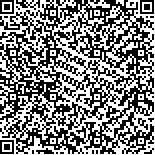|
| 引用本文: | 王朋鹏,张芳,孙松.白色霞水母(Cyanea nozakii)摄食行为与消化时间研究.海洋与湖沼,2019,50(4):864-875. |
| |
|
| |
|
|
| 本文已被:浏览 2942次 下载 1737次 |

码上扫一扫! |
|
|
| 白色霞水母(Cyanea nozakii)摄食行为与消化时间研究 |
|
王朋鹏1,2,3,4, 张芳1,2,4, 孙松1,2,3,4,5
|
|
1.中国科学院海洋生态与环境科学重点实验室 中国科学院海洋研究所 青岛 266071;2.青岛海洋科学与技术试点 国家实验室 海洋生态与环境科学功能实验室 青岛 266071;3.中国科学院大学 北京 100049;4.中国科学院海洋 大科学研究中心 青岛 266071;5.中国科学院海洋研究所 山东胶州湾海洋生态系统国家野外科学观测研究站 青岛 266071
|
|
| 摘要: |
| 近年来白色霞水母(Cyanea nozakii)在我国近海出现数量波动,在其暴发年份严重影响了暴发区域的社会、经济和生态。本文通过观察不同饵料密度下白色霞水母触手丝的长度变化、游动状态来研究其摄食行为,同时对白色霞水母消化时间进行研究,结果表明:饵料密度较低时,霞水母触手丝完全伸展;密度过量时(500ind./L),周围饵料较充足,触手丝处于收缩状态;饵料密度对霞水母游动状态无显著影响,表明霞水母在水体中通过不断调整触手丝伸长与收缩来对周围饵料进行感知,达到一种高效的摄食状态,而非调整其游动状态。饵料种类、大小对霞水母消化时间具有显著影响:温度为18.5℃环境下,胶质类生物(水螅水母和海月水母碟状体)在霞水母胃中平均存留时间为(0.8±0.2) h,平均比大小无差异的桡足类短2.3h,比鱼类短3.7h,相比而言,胶质类生物较易消化,鱼类最难消化;随桡足类、海月水母、鱼类的体长增加,霞水母对其消化时间显著增长;随着霞水母伞径增大(2.2—14.5cm),以卤虫为饵料消化时间呈显著线性下降,以桡足类为饵料消化时间无显著差异,表明霞水母伞径大小对消化时间的影响因饵料种类不同而有差异。本文的研究结果为野外环境中定性与定量研究霞水母摄食率提供基础。 |
| 关键词: 霞水母 触手丝 摄食机制 摄食率 胶质类浮游动物 |
| DOI:10.11693/hyhz20181200300 |
| 分类号:S917.4 |
| 基金项目:国家重点研发计划,2017YFC1404405号;鳌山科技创新计划项目,2016ASKJ02-2号;中国科学院战略性先导科技专项(A类)资助,XDA11060201号,XDA11060203号。 |
| 附件 |
|
| FEEDING BEHAVIORS AND DIGESTION TIME OF CYANEA NOZAKⅡ |
|
WANG Peng-Peng1,2,3,4, ZHANG Fang1,2,4, SUN Song1,2,3,4,5
|
|
1.CAS Key Laboratory of Marine Ecology and Environmental Sciences, Institute of Oceanology, Chinese Academy of Sciences, Qingdao 266071, China;2.Laboratory of Marine Ecology and Environmental Sciences, Pilot National Laboratory for Marine Science and Technology(Qingdao), Qingdao 266071, China;3.University of Chinese Academy of Sciences, Beijing 100049, China;4.Center for Ocean Mega-Science, Chinese Academy of Sciences, Qingdao 266071, China;5.Jiaozhou Bay Marine Ecosystem Research Station, Institute of Oceanology, Chinese Academy of Sciences, Qingdao 266071, China
|
| Abstract: |
| Cyanea nozakii, as a common jellyfish distributed in offshore China, its quantity fluctuated in recent years. Blooms of this jellyfish often cause enormous ecological, economic, and societal losses in the blooming areas. In the present study, changes in the length of tentacles and swim pulse frequency with time were measured under different prey concentrations, to reveal the feeding behaviors of C. nozakii. Moreover, the influencing factors of digestion time were studied to offer the basic data for qualitative and quantitative predation rate in the field. The results suggested that prey concentrations had marked effect on the length of tentacles, but no significant effect on the swim pulse frequency. It was indicated that C. nozakii could sense the surrounding preys by adjusting the length of tentacles, rather than by changing its swimming state. The prey types and sizes had significant effects on the digestion time. At 18.5℃, C. nozakii digested small medusae in (0.9±0.2)h, copepods in 3.2h, and fishes in 4.9h; the digestion time for copepod, Aurelia coerulea, and fish tended to increase significantly with increasing prey size. The digestion time tended to linearly decrease with increasing C. nozakii size when Artemia was offered as prey, whereas it had no significant change when copepods was offered as prey. Hence, the results demonstrate that the effect of C. nozakii size on digestion time varied with prey types. |
| Key words: Cyanea length of tentacle predation mechanism predation rate gelatinous zooplankton |
|
|
|
|
|
